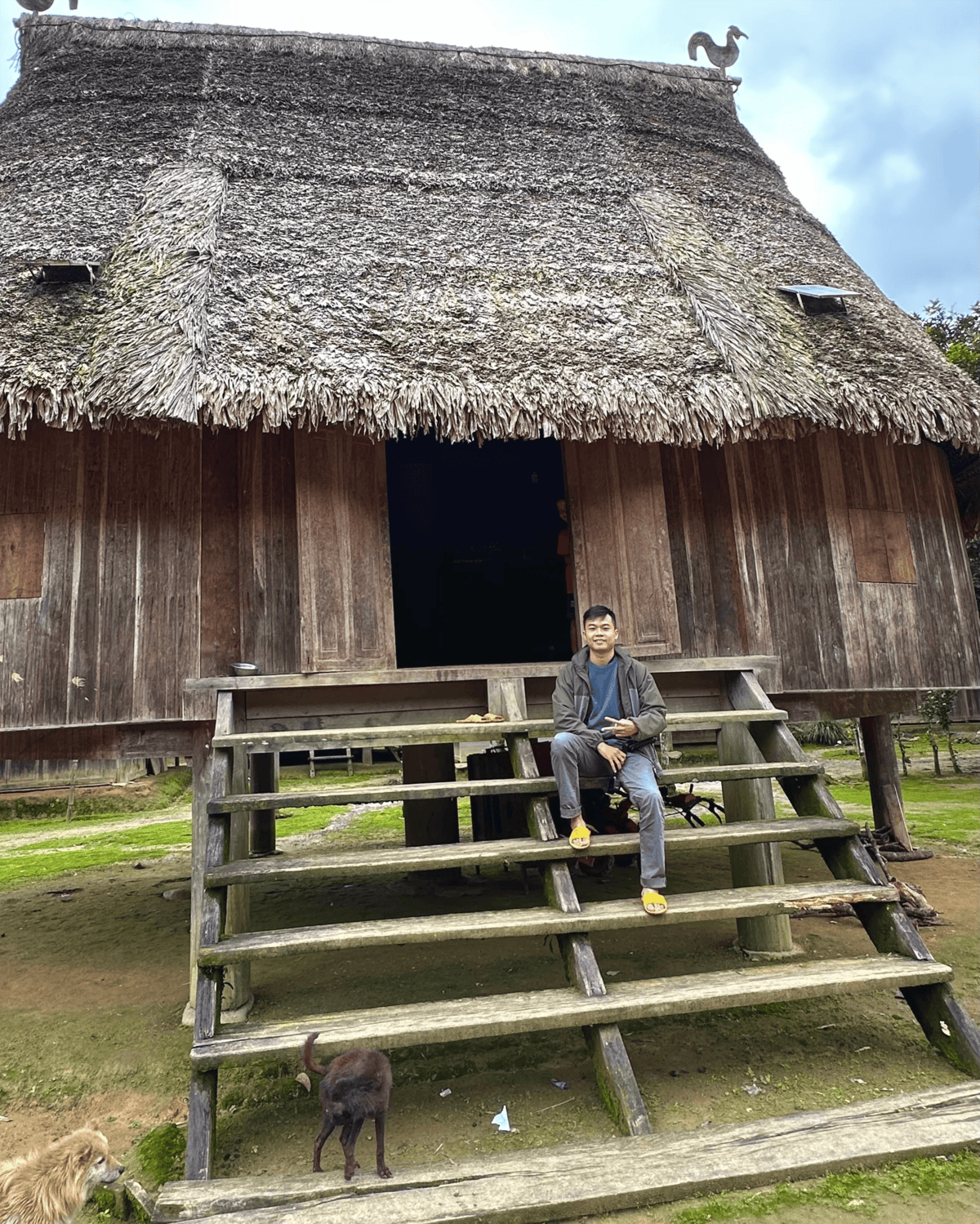
Tran Tan Tai from Hai Phong city is a young YouTuber with a personal channel boasting nearly 40,000 subscribers, specializing in videos exploring unusual stories from both Vietnam and abroad.
This 90s-born adventurer has been to seven countries and various provinces and cities across Vietnam to document and spread captivating travel stories and experiences.
Below, Tran Tan Tai shares his fascinating story about Aur village, a place called "the cleanest village in Vietnam":
"If I hadn’t gone and seen it with my own eyes, experiencing life alongside the local people of Aur village, I would hardly believe that such a strange: yet captivating village exists in Vietnam.
"Aur village is situated atop a mountain more than 1,000 meters above sea level, belonging to A Vuong commune, Tay Giang district, Quang Nam province. It is home to 98 residents (23 households), all of whom are ethnic Co Tu minority people.
"I was fortunate to meet Mai An, born in 2000, a Co Tu native born and raised in the village, who guided me and accompanied me on a 20-kilometer hike through the forest, crossing waterfalls.
"We set off from Hoi An City at 3 am on a motorbike, traversing over 100 kilometers of winding mountain roads to reach the foot of AVuong1 Bridge, where we began our trek into Aur village. We walked from 10am to 3pm.
"What struck me immediately upon setting foot in Aur village was its simplicity yet absolute cleanliness. The paths and walkways, all made of natural soil, were spotless – not a single piece of trash or withered leaf in sight.
"My first impression of the village lived up to what people had said: it truly is 'the cleanest village in Vietnam', often compared to a 'mini Singapore in Vietnam'.

"There, the villagers hold each other accountable for maintaining high standards of cleanliness. Every household sweeps and tidies regularly, refraining from littering – not even a plastic bag, fruit peel, or a scrap of paper.
"Anyone caught littering will be punished by having to clean the entire village. Children are taught to dispose of trash properly and keep the environment clean.
"Remarkably, the villagers keep livestock and poultry far from living areas, preventing them from wandering freely. As a result, both homes and communal spaces remain pristine.
"Beyond its clean and beautiful scenery, I discovered many other intriguing things during my brief two-day stay with the locals.
"There was no electricity, no trash, and no telecommunications signal in the village. After 6pm, people use solar-powered lamps. They use gasoline-run saws.
"There’s no market, no medical station, and no roads for vehicles. The only way in is a narrow 20-kilometer trail through pristine forests, wading across streams with endlessly flowing water and crossing hills perpetually shrouded in clouds.
"Though the journey was inconvenient and somewhat arduous, the warmth and hospitality of the villagers made me fall in love with this place.
"As evening fell, Aur villagers bustled about, carrying small trays toward the communal house. On the trays were bowls of rice, plates of vegetables, and sometimes boiled chicken, grilled stream fish, or smoked pork.
"A hearty dinner was laid out quickly, with delicious dishes reflecting the village’s culinary culture. The locals warmly invited me to join them for the meal.
"This is the tradition of "communal feeding of guests," a practice that Co Tu people have been maintaining for many generations. The head of the village said whenever a visitor arrives, every household contributes something – a bowl of rice, a cup of rice wine, a grilled fish – whatever they have to treat the visitor. Each family might prepare one dish or two to three different dishes.
"During that meal in the village, I got to try some beef dishes, like stir-fried beef intestines, minced tongue cooked with brain, and scorched beef skin.
"The villagers described these as their specialties – the most delicious dishes they reserve for welcoming guests.
"I had the chance to participate in the Co Tu people’s new rice ceremony, which included two dishes: boiled chicken and hot rice. After this ritual, the villagers could begin eating the new harvest.
"Every moment in Aur village was truly worthwhile for me. The people were friendly, affectionate, and hospitable. When I left, all the villagers came out to bid me farewell."
Thao Trinh